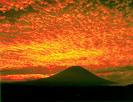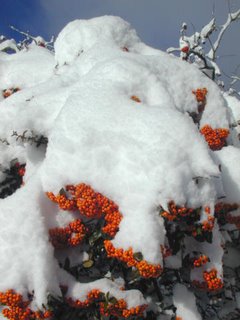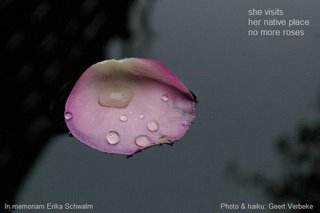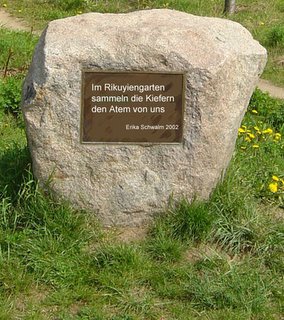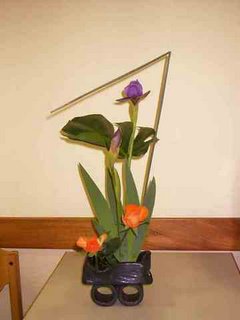:::::::::::::::::::::::::::::::::::::::::::::::::::::::::::::::::::::::::::::::::::::::::::::::::::::
March (sangatsu 三月)
***** Location: Worldwide
***** Season: Mid-Spring
***** Category: Season
*****************************
Explanation
Haiku sangatsu in the Edo period relates to the climate of present-day April,
but some festivals are dated in our present-day March.
. . Names of Japanese months and their meanings . .
. . . . SPRING
the complete SAIJIKI
:::::::::::::::::::::::::::::::::::::::::::::::::::::::::::::::::::::::::::::::::::::::::::::::::::::
March -Human beings as a part of nature
Sangatsu 三月
March is said to be middle spring according to the calendar. As soon as March comes, though being still cold, we feel relieved and relaxed. And also March is the month of the turning of the seasons from cold to warmth. It is traditionally said that the hot and cold weather last until the equinoctial week. The cold days and warm days come alternately. Accordingly the typical seasonal words which express atmosphere of the first half of March is perhaps harumeku (signs of spring) and the latter half, atataka (warmth).
March 3rd is momo-no-sekku (the Feast of Peach Blossoms, hina-matsuri, the Doll's Festival). This festival which we display dolls, wishing for the girls' happiness of future is a beautiful and graceful celebration, which features historical and regional customs. About March 6th is keichitsu. It is said that the insects such as grubs, snakes and frogs come out of hibernation. The trees come into buds, the grasses sprout up, hills and fields become lively or looks vivid. We have an impression that flowing water gets slight warmer from its color and movement. Yamawarau (mountains smiling) or mizu nurumu (water getting warm) which express these delicate changes.are appropriate seasonal words.
At this time of the year people have turned their eyes more closely on nature. We express the impression of this season by using such seasonal words as tanishi (mud snail), shijimi (shijimi clam), migusaou (grass coming out of water), moroko (minnow), yanagihae (daoe, fish like leaf of willow), haru shiitake (spring shiitake mushroom).
Omizutori is held on March 13th at Nigatsu-do Hall of Todaiji Temple. The day is the climax of Shuni-E. It is the fire festival of telling the arrival of real spring in Kansai.
Higan (equinoctial week) is believed to start on about March 18th and to last to about 24th. Spring Equinox Day is the middle day of this week. From this day real spring starts. Many kinds of leaf buds and grass buds can be seen in Saijiki (a glossary of seasonal terms for haiku composers) includes a variety of words to express these phenomenon of the buds of leaves and grasses. The life of people also becomes busy farming like tauchi (plowing the fields) or hatauchi (tilling the fields) naedoko (seed bed), tanemaki (seeding).
And also fishermen are busy catching fish that gather to the coast for spawning like sawara (Spanish mackerel), nishin (herring). On a warm and fine day, when heat is waving the air, people are tempted to go out to the field for pleasure. It is referred to as noasobi. When we find the many seasonal words such tsumikusa (gathering herbs) and the names of herbs or wild flowers in Saijiki, we appreciate how the Japanese love nature and live together with nature and find out pleasure in nature.
It can be said that our ancestors responded to and lived together with nature, though they did not realize that human beings were part of nature. We believe that it is very important for us to recognize and maintain their perception because we live in the time when the destruction of nature is underway.
Inahata Teiko
http://www.kyoshi.or.jp/12month/12month-3.htm
xxxxxxxxxxxxxxxxxxxxxxxxxxxxx
Japan in March
March 1-14: Todai-ji Temple:Nara-shi , Nara
This is part of the monks training program known as shuni-e. On the night of the 12th the monks light large torches and wave them around from the temple's gallery. Following that a ceremony is performed in which water is drawn from a well.
March 3: Hina Matsuri
This is also referred to as the Doll Festival, Peach Festival or Girl's Festival. People pray for the happiness and healthy growth of girls and families with young daughters set up a display of dolls inside the house.The tradition goes back to the Edo Period (1603-1868).
The dolls wear costumes of the imperial court during the Heian period (794-1192) and are placed on a platform with various tiers of five to seven layers.
The top tier is for the Emperor and Empress. A miniature gilded folding screen is placed behind them as it was in the real court. The second tear has three ladies-in-waiting. The third has five male court musicians; the fourth has ministers sitting on either side of trays of food; the fifth has guards with an orange tree on the left and a cherry tree on the right.
The family celebrates with a special meal of diamond-shaped rick cakes and shirozake which is rice malt with sake.
The dolls are returned to their storage space after the festival is over since there is a superstition that families that are slow in putting the dolls away will have difficulty in marrying off their daughters.
March 6: Utsu-ue Matsuri
At Yatsufusa-jinja Shrine, Kushikino-shi, Kagoshima, a rice-planting festival with a dance performed by men wearing ox masks.
March 12: Water-Drawing Festival (O-Mizutori)
This is held at Todaiji, Nara and is one of the most famous fire festivals in Japan. At midnight priests carry large torches to mark the drawing of the sacred water from the Wakasa well below Nigatsudo.
May 13:Kasuga-taisha Shrine
The Kasuga-taisha Shrine: Nara-shi, Nara holds its spring festival on this date. There is a horse ceremony involving a sacred horse being led into the shrine precincts. There is also a special dance performed called the Yamato-mai.
The shrine itself dates back to the 8th century. Just as a matter of general interest this makes the shrine about seven centuries older than the "discovery" of the U.S.
March 14: White Day (see Valentine’s Day )
This is one of the holidays basically invented by business. A company that made marshmallows started a campaign in 1965 urging men to repay the woman they got valentine's chocolate from with their soft, fluffy marshmallows. The term White Day came from the color of the candy.
Gradually other candy makers got into the act, the marshmallows were dropped, and men were encouraged not to just give candy but also to give gifts like women's handkerchiefs.
March 17: Fujimori-no-Taasobi
This is a special rice-planting festival at Oi Hachimangu Shrine, Oigawa-cho, Shizuoka. It features 27 different dances and dates back to around a thousand years ago.
March 20 or 21: Shunbun no Hi: Vernal Equinox Day
This is the day that the sun crosses the equator and the length of night and day becomes equal. It is basically a day to show affection for all living things.
Higan refers to the period of time three days before the vernal equinox to three days after it. During this time respects are paid to ancestors and visits are made to family graves to clean them and offer flowers and incense to ancestral spirits.
Late March: Graduation Ceremonies
The Japanese school year ends in March so this is a time of graduation ceremonies. Generally the principal opens with an address after which there are speeches from guests. Certificates are given individually to the students. After they receive their certificates the students sing Hotaru no hikari (light of fireflies).
Japanese Festivals of all months
January .. .. February .. .. March .. .. April .. .. May .. .. June .. .. July .. .. August .. .. September .. .. October .. .. November .. .. December
http://www.bookmice.net/darkchilde/japan/jfestival.html
*****************************
Worldwide use
long past midnight
prayer wheels creak
March wind
Sonam Chhoki
. BHUTAN
:::::::::::::::::::::::::::::::::::::::::::::::::::::::::::::::::::::::::::::::::::::::::::::::::::::
Southern Hemisphere, Tropics ...
Adjustments for each region must be made.
Calendar reference kigo
:::::::::::::::::::::::::::::::::::::::::::::::::::::::::::::::::::::::::::::::::::::::::::::::::::::
Quotes ... Links ... References ... Chores
Spring - Quotes for Gardeners
Compiled by Michael P. Garofalo
http://www.egreenway.com/months/monmar.htm
*****************************
Things found on the way
A short haibun by susan delphine delaney
the hawks circle, essentially floating, on the thermals (upward heat currents caused by the solar heating of dark, dense ground objects like rocks), watching for mice or other small mammals moving in the dead, winter-beaten fields.
at this time of year, mating pairs come together to hunt, as part of their yearly pairing ritual. later in the year, indeed, for most of the year, each hawk will hunt alone.
march thermals
red-tailed hawks
mousing in pairs
published in simply haiku in a renga called 'tailgate party".
xxxxxxxxxxxxxxxxxxxxxxxxxxxxx
March Photo Collection
http://www.acclaimimages.com/search_terms/march.html
March Calendar & Holidays .. .. worldwide
xxxxxxxxxxxxxxxxxxxxxxxxxxxxx
March 19 2004 in Baghdad
Photos of a demonstration against the ocupation and for Iraqi unity in Baghdad.
On the day before the anniversary of the US led invasion of Iraq, a demonstration took place in Baghdad in tandem with protests around the world against the violence of the occupation. The protest was also a powerful show of unity between Sunni and Shia muslims. The marches started with the Shia's in Khadamiya, and the Sunni's across the river in Adamiya. The two groups met just as the Shia's came over the bridge, and emotions were high as they merged into one. They then walked for together to a public square where speakers denounced the occupation and called for unity between all Iraqis.
Curtesy to Andrew Stern
http://indybay.org/news/2004/03/1674128.php
*****************************
HAIKU
First day of Spring,
clear sky to Mt. Shasta--
emptiness is form.
Michael P. Garofalo, 2000, Cuttings
xxxxxxxxxxxxxxxxxxxxxxxxxxxxx
March Haiku
by Victor P. Gendrano
http://www.geocities.com/vgendrano/marhaiku.html
xxxxxxxxxxxxxxxxxxxxxxxxxxxxx
Haiku from March 2003
by Gary Warner
http://www.haikuworld.org/gary/mar2003.gar.html
xxxxxxxxxxxxxxxxxxxxxxxxxxxxx
Aozora haiku publication : March 2003
Editor : Jasminka Nadaskic Diordievic, and submissions (s)
http://www.tempslibres.org/aozora/en/hpub/pub0303.html
xxxxxxxxxxxxxxxxxxxxxxxxxxxxx
A Japanese Garden of Verse
in midst of odd new leap-year
finding two full moons of March
while February had none
Haikusmith 03/09/99
http://www.webcom.com/~erique/haiku/haiku399.html
*****************************
Related words
***** Calendar reference kigo
. . . . SPRING
the complete SAIJIKI
. WKD : March - KIGO CALENDAR .
:::::::::::::::::::::::::::::::::::::::::::::::::::::::::::::::::::::::::::::::::::::::::::::::::::::
[ . BACK to DARUMA MUSEUM TOP . ]
[ . BACK to WORLDKIGO . TOP . ]
:::::::::::::::::::::::::::::::::::::::::::::::::::::::::::::::::::::::::::::::::::::::::::::::::::::

